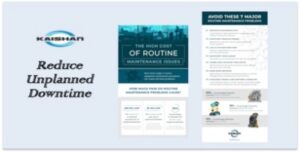How to Start a Food Truck Business (Guest Blog)

A guide to getting started in the food truck industry.
Are you a foodie? Have you thought about opening a restaurant but found the startup costs prohibitive? This type of “moveable” business is a good introduction to the foodservice industry, without the costs and risks of opening a restaurant business.
Starting and Scaling a Food Truck Business
If you haven’t worked in the food truck business before, it’s easy to romanticise the “van life.” It isn’t the same as having a barbecue or being a cook in a restaurant. Understand the pros, cons and keys to success of starting your own food truck business?
Pros – The capital required is substantial, however is far less than starting a restaurant. You have the flexibility to set your own hours, experiment with menus and move to locations with high foot traffic to do business.
Cons – You will need to meet the relevant regulations and standards for your market. This process can be daunting and takes diligence. Food truck owners often work long hours and weekends, especially at start-up. It can also be challenging to build a customer base with so many other food options on the market.
let’s look at the key steps involved in starting a food truck business.
1. Brainstorm your Concept
Your concept can make or break your business. Create a menu and a concept that stands out from the competitors and what is already available on the market. Identify gaps in the market that you can benefit from.
Research the local food truck scene and the market trends. Decide what type of food you would like to specialise in e.g. breakfast, lunch, snacks, confectionary and the type of cuisine you will serve e.g. fast food, high end. Don’t forget about adding a personalised twist! Study competitor menu offerings and unit prices.
Identify potential customers:
- Research the needs of your potential customers e.g., are there a lot of offices or schools in the area, people who might want quick lunch options?
- What type of cuisine is popular with the potential customers but isn’t offered by other food trucks?
Coming up with a concept is one thing, creating the supporting menu is quite another. Understand the Paradox of Choice as you design your menu. Don’t overwhelm your customers with too many options, offer fewer menu items but make them truly memorable. Most food trucks offer 5-12 menu items, however you might want to consider starting with just 3-5 items. You can always add more later.
As space is limited include ingredients that are easy to store and items that are easy to prepare using basic equipment. Include locally sourced ingredients that can be promoted on your menu.
2. Legal and Regulatory Requirements
Research the rules and regulations for your market e.g. check local authority requirements for parking permits, licences etc and where you can legally park to sell food. Check Food Safety and Quality Authority requirements for your market.
3. Develop a comprehensive a business plan
Estimate the capital and operating expenditure that you will need to set up and run a food truck business Here’s what to consider in your food truck business plan:
- Purchasing or leasing a truck.
- Ongoing fuel and parking costs. Parking may not be free especially in busy areas.
- Truck fit-out costs e.g. installing a kitchen, cookers, grills, fridges, sinks, water supply, electricity, preparation, cooking and storage utensils, cleaning equipment, debit/credit card machine. Generally, the less you pay for the food truck, the more you can expect to spend on equipping it.
- Ingredients and supplies. This includes menu experimentation, ingredient sourcing and food preparation in addition to replenishing stock.
- Serving utensils e.g. disposable plates and cups, this cost can add up when serving 100+ customers per day.
- Branding e.g. brand agency, website, social media, truck wrapping, menus, flyers
- Insurance costs – You will need to have appropriate insurance.
- If you are hiring staff, salaries will contribute significantly to your startup costs.
How much revenue and net profit do you expect to generate in your first year? What revenue growth do you anticipate in the first five years?
If you don’t have sufficient funds for start up, check out the various financing options for your market. Markets differ with respect to the types of supports that are available.
4. Marketing and branding
How will you promote your food truck business and build a customer base? How will you create a brand with a buzz? Here are some tips to make your food truck stand out (besides serving amazing meals)?
- Choose a catchy, memorable name that also works well as a hashtag.
- Invest in stylish truck wrapping. Your food truck needs to look bright and inviting to attract customers. Make it Instagram-worthy.
- Create a concept that resonates with customers and create flyers for distribution to local businesses.
- Create a website and social media profiles. Make sure that your online presence conveys your brand image and looks professional.Look for opportunities to partner with social media influencers.
Word of mouth is critical to building a brand, make sure that your customers have a great food experience that they will tell others about.
Conclusions
A successful food truck business allows you to embrace your passion for food. It can be fun to run and can provide a solid income. It affords you the opportunity to be your own boss, build a business from scratch and build a brand you can be proud of. There’s no denying that it will be hard work with long hours and stress especially at start-up however the financial upside and sense of satisfaction can be substantial.
So if the idea of starting a food truck appeals to you, why not give it a shot. It might turn out to be one of the best decisions you will ever make.
ARTICLE BY: Tomas Laurinavicius
Tomas Laurinavicius is the Editor in Chief at SimplifyLLC. SimplifyLLC is an independent publication that provides free guides for small business owners. Tomas built multiple online businesses and helped scale companies with streamlined content marketing operations. His work has appeared in Forbes, TIME, New York Observer, HuffPost, Adobe, and BigCommerce, among many other publications.






